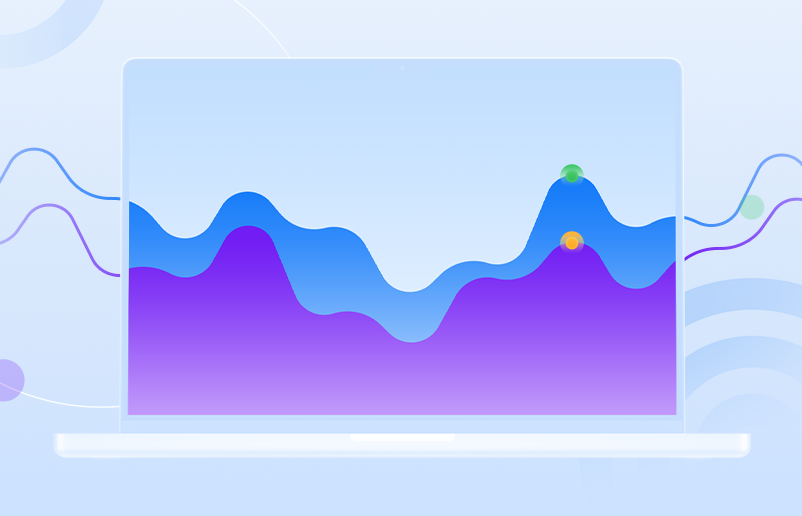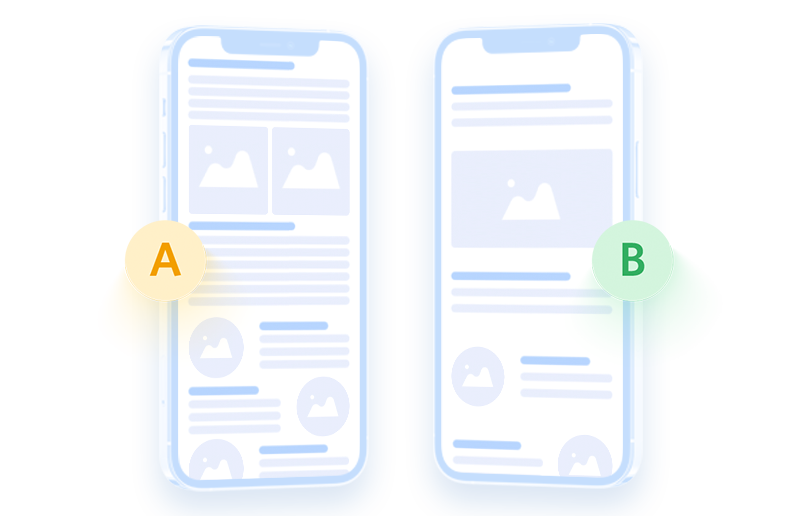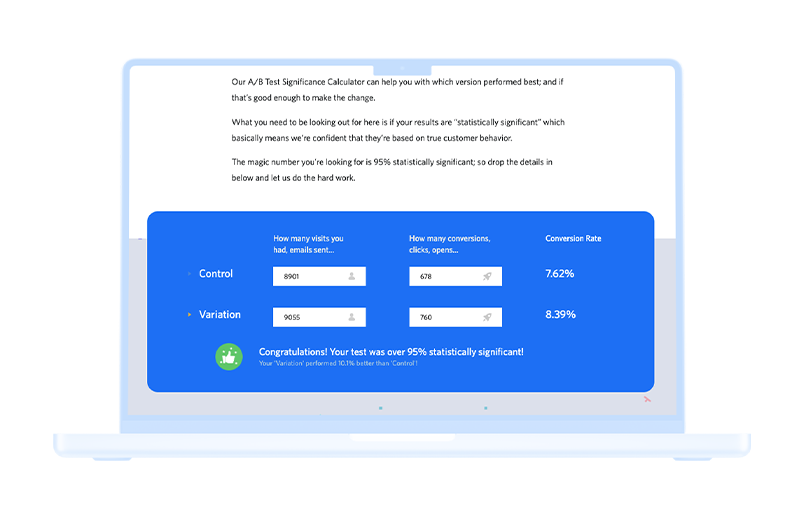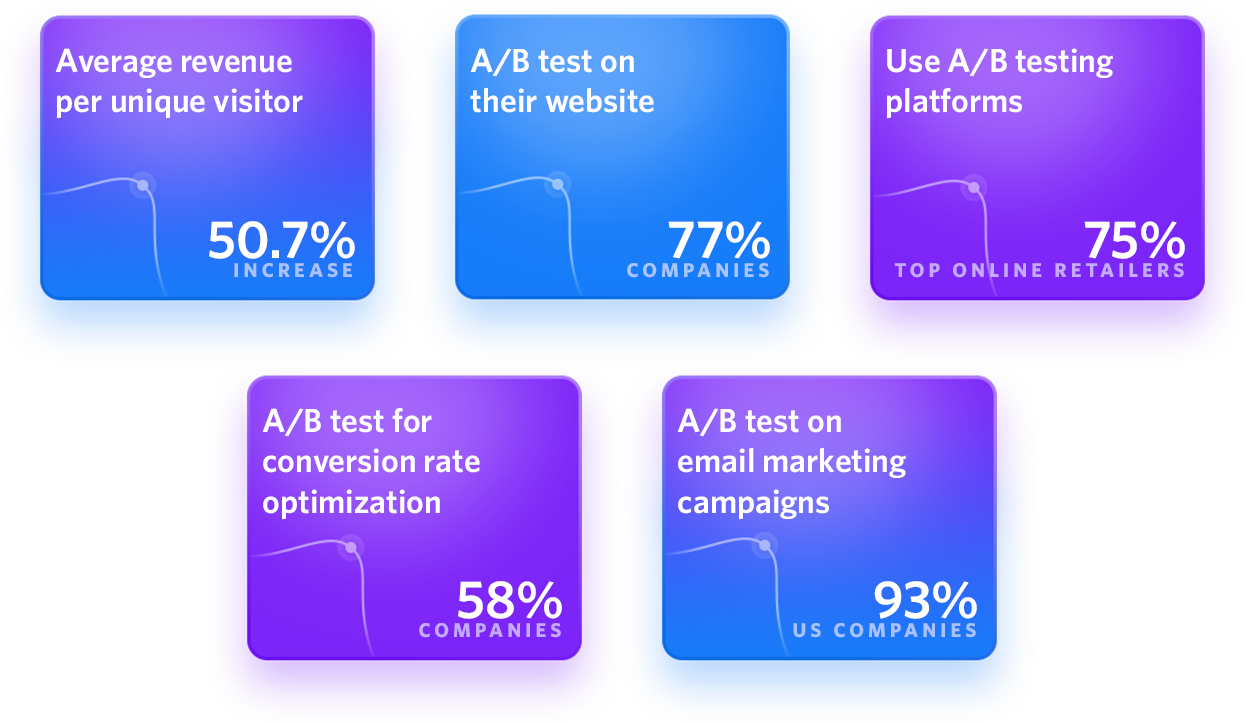Explore A/B Testing strategies and basics with SaleCycle.
Changing visitors into paying customers is the ultimate goal of any ecommerce business. We all want to see valuable traffic coming in from our ad campaigns to convert into successful sales.
We’re sharing examples and results from our 2022 A/B Testing stats and databases to help you utilise this experimental technique wherever you’d like to see your ratings and results improve in 2023.
Use this article as a useful guide for A/B Testing ideas and methods, and explore the Do’s and Don’ts of A/B Testing to ensure you’re getting the best online conversion rates. We also explore the best A/B testing best practices in another article.
What Is A/B Testing?
Also known as split testing or bucket testing, A/B Testing is a process of comparing two versions of a web page or element to find out which one performs better – version A versus version B.
So what is A/B Testing used for? The variants of these pages are shown to customers at random, and statistical analysis is used to determine which version provides more positive results. This can be described as an online behavioural experiment, much like our social proof model, which also delves into the behaviours of how people act online given different circumstances.
The circumstances we are going to explore today are those that assess the types of visual, qualitative, and interactive information you provide.
Why Is A/B Testing Important?
A/B testing allows companies to make estimated changes to their consumer experiences whilst collecting insightful data on the outcome. Once the results of an A/B Test are collected, this could allow you to construct a conclusion to learn why certain elements of their experiences and actions impact customer behaviour.
This is a great way to pinpoint exactly where you can improve your platform without disturbing the customer or audience.
You can positively affect your conversions with A/B Testing by:
- Finding out when your customers are more likely to buy online
- Monitoring and discovering why people abandon their booking or cart
- Reducing customer’s bounce rates
- Building a better performing, more trustworthy platform


What Can You Test With A/B Testing?
Elements that may be worth testing and reassessing can be split into three different groups within digital marketing: visual, qualitative, and interactive.
You can delve deeper into these separate A/B Testing examples here, so that you are able to trial different variations in your next digital marketing test period.
Visual:
When providing a compelling space, you need to make your campaign aesthetically appealing. Studies show that we process visual information including colours and imagery 60,000 times faster than text – with this information alone you can use A/B Testing to trial different ways to persuade your audience to stay and explore. Think about:
👁 Colour combinations – Are they too vivid or dull? Or fitting with your brand?
👁 Font styles – Is your text easy to read? Is the font size and spacing consistent?
👁 Choices and placements of imagery and graphics – Are they relevant to the message? Do the images carry a style/ theme that is pleasing to the eye?
👁 Clutter vs. white space – Is there too much information clustered together in one spot?
Qualitative:
There are many simple ways to improve comprehension and readability in a text. You want your audience to be able to understand and remember the information you are providing so that they continue to use your platform as a reliable source. So, remember to think about testing:
📝 Choice of vocabulary – Are your choice of words easy to understand? Are there enough key words or phrases that can be recognised?
📝 Amount of vocabulary – Are the sentences and/ or paragraphs too lengthy or brief?
📝 Relevant topics – Are you regularly relating back to the main topic in question?
Interactive:
Having an interactive webpage, form or email is a great way to encourage customer engagement, which can in turn improve your conversion rates across the board. With A/B Testing, you can tailor your choices of interaction, which could overall impact whether the viewer will stay, or leave.
👆 Use of pop-ups – Are there too many? Is the content of the pop-ups helpful or relative to the cause?
👆 Links to other locations and articles – Are you linking cohesive information that may be of interest?
👆 Buttons and tabs – Are they easy to find and navigate? Are there too many?
👆 Form fields – Do they allow customers to give and receive relevant information?


The DO’s and DON’Ts of A/B Testing:
If you’re not taking advantage of A/B Testing tactics, you could be missing out on some massive marketing improvements. Minor changes can make for significant results! Now that we’ve been through some testing considerations, we can look into how they can be used appropriately.
Below are 6 simple yet effective ways you can improve your customer conversion rates – just follow this short yet essential guide on the Do’s and Don’ts of A/B Testing.
Do: Test One Variable at a Time
It pays to keep tests simple and try out one change at a time. For example: With emails, if you were to test subject lines, CTAs and copy all together in the same test, you’ll never know which one made the difference.
Do: Test Groups of the Same Size and Type
Different customer segments vary in behaviour, so it’s important to target your tests toward groups of the same size and traits to deliver reliable and comparable results.
Do: Make Sure Tests are Statistically Significant
It’s easy to get carried away with promising test results, but it’s vital your results are “statistically significant”, meaning you’re confident that they’re based on true customer behaviour.
Don’t: Become Distracted by Results in Other Areas
A/B tests can deliver unexpected results, but it’s important to maintain focus on your end target – whether that’s a micro or macro conversion goal.
For example, if you’ve made changes to improve open rate and your click rate increases, it’s probably unrelated – so remember to stick to your initial goal.
Don’t: See a Test Fail as a Failure
Not every test will be successful – however, ‘failed’ tests can provide some insight. Even if your first tests don’t deliver the results you hoped for, keep going. A/B testing can take time and patience.
Don’t: Forget About Your Other Channels:
Why test for just one platform? A/B testing doesn’t have to be used purely for website design or email marketing. You can conduct testing for every marketing channel;
- Social media and networking channels (e.g. LinkedIn, Twitter, Facebook)
- Email marketing
- Etail websites
- Blogs
…as long as you’re using the relative measurements for each platform.
A/B Testing Calculator
How are A/B Tests measured? Investigation into these behaviours can be carried out using our free and easy online A/B Test Significance Calculator.
Try now and find out how your conversions measure up.


A/B Testing – 2022 Stats
A/B Testing statistics suggest this method may be the perfect process to give you an idea if you are on the right track to optimisation and improving your brand presence, to ultimately help you secure more happy customers online. Below are just a few of the most recent A/B Testing results, statistics and trends which outline just how useful this method can be.
- Successful A/B testing can bring a 50.7% increase in the average revenue per unique visitor for ecommerce sites. – (VWO)
- Some 77% of companies are running A/B testing on their website. – (Adoric)
- Around 75% of the top 500 online retailers use A/B testing platforms. – (AI Multiple)
- About 58% of companies use A/B testing for conversion rate optimisation. – (Invesp)
- 93% of US companies do A/B testing on their email marketing campaigns. – (Marketing Land)


A/B Testing – Our Summary
The whole purpose of A/B testing is to discover exactly what your audience wants – the customer is always right. By covertly monitoring trends and habits over periods of time, you can produce a platform that has been specifically tailored to your end goal.
It’s clear that A/B Testing may take a certain amount of time and effort – however, the process can further help you to understand your audience’s specific wants and needs so that you can achieve the end goal of more traffic, more sales and better conversions.
It’s all about trusting the process.
Speak to an expert
Learn how to convert your online audience into revenue with our experts.


Casey Turnbull
Casey is a Fashion Journalism graduate & ecommerce marketing executive at SaleCycle. Casey is committed to producing high quality content backed by in-depth research and data. She has experience developing content in a range of sectors including fashion, ecommerce and sports.
![A/B Testing Ideas & Strategies – 6 Do’s and Don’ts [2023]](https://www.salecycle.com/wp-content/uploads/2022/03/ABtesting_header.png)







![Valentine’s Day Ecommerce Tips and Trends [2024 Strategy]](https://www.salecycle.com/wp-content/uploads/2019/01/valentines-ecommerce-1.png)




![How SaleCycle helped Vodafone increase their online sales by an additional 2,000 additional sales per month [Extended Version]](https://www.salecycle.com/wp-content/uploads/2023/08/vodafone-banner.webp)




